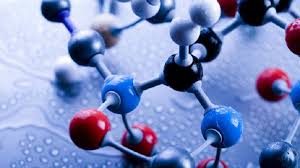Desperate times, they say, call for desperate measures. The current world population of about 7.6 billion, is projected to reach 8.6 billion in 2030, 9.8 billion in 2050, and 11.2 billion in 2100, according to the United Nations.
This projection has raised concerns, as feeding such a large population is not a walk in the park, the need for food security is no longer an option, but a necessity, hence advancement in agriculture is needed now than ever before, including innovations like climate-resistant crops.
Climate change is not a new mantra in everyone’s lexicon. It has far-reaching effects, dating back to when anyone could remember. The rise in temperatures, inconsistent weather patterns, and increase in the frequency of extreme weather conditions, have had significant impact on agriculture. All these issues top the main challenges that farmers face across the globe.
The challenges not only reduce crop yields, but also serve as threats to sustainable agriculture, which is necessary for meeting the food demand of a fast-growing population. According to the University of California (2021), the aim of sustainable agriculture is to meet society’s food and textile needs at present, without compromising the ability of the future of the future generation to meet their own needs.
From this perspective, we can agree that climate change is not just a threat to the present, but also a threat to the future. For every action, there is an equal and opposite reaction, as stated by Newton’s third law of motion. In this context of climate change, this principle reminds us that as we seek solutions to combat its effect, we must also consider the consequences and potential of these interventions.
Among the numerous strategies to mitigate the effect of climate change on crops, biochemistry stands out as a promising field. Scientists are increasingly exploring biochemical approaches to enhance crop resistance, harnessing the power of molecular and genetic technique to develop climate-resistant crops. Biochemistry offers a versatile approach for enhancing crop resistance.
Researchers are exploring vast of methods to improve crops genotype and phenotype to enhance specific traits in crops such as drought tolerance, enabling crops to maintain unhindered yield with less water, pest resistance is also improved, protecting crops from insects and diseases.
Additionally, biochemistry aids in developing crops with better water-use efficiency, necessary for areas with erratic rainfall. Salinity tolerance is also improved to enable crops thrive in high-salinity soils. These advancements are key at ensuring food security in the face of climate change. Building upon these advancements, it is important to delve into the intricate biochemical techniques that drive these innovations. They include:
Genetic engineering
According to the Natural History Museum, genetically modified crops are plants, which have had their DNA changed by scientists to create desired traits, often by adding just a gene from a close wild relative. For instance, genetically modified crops can be engineered to resist pest and diseases, thereby enhancing crop yields and reducing the usage of chemical pesticides.

Clustered regularly interspaced short palindromic repeats (CRISPR)
It is a gene-editing tool that enables precise alterations to DNA. This works by cutting specific sequences in the genome thereby facilitating changes, additions or deletions in the DNA.
The method is highly targeted, meaning it can modify specific genes with high accuracy. For instance, in maize, scientists could use CRISPR to modify a gene responsible for controlling how efficiently the crop uses water.
This technique can also work by making the plant close its stomata (pores on leaves) more efficiently, thus reducing its rate of water loss, allowing the crop to survive longer in drought conditions.
This kind of gene editing help crops to grow in areas with less rainfall, making them more resistant to climate-related stresses.
Marker assisted selection
This is another biochemical technique that can be used to improve crops traits, including enhancing resistance to climate change. It uses molecular markers (specific sequences of DNA associated with preferred traits for example, drought tolerance), thereby assisting farmers to select and breed crops with these preferred traits efficiently.
Scientists first identify molecular markers associated with climate-resistant traits, after which they use the identified markers to screen a large number of crops at an early stage.
This facilitates selection of crops with preferred traits without waiting for the crops to fully mature or be exposed to stressors.
Metabolomics
This is another biochemical technique that can be used to improve crops resistance to climate change. It involves a well detailed study of metabolites, small molecules produced during metabolism of an organism.
By analysing these small molecules, scientists can gain deeper understanding of how crops respond to environmental stressors such as salinity, drought, rainfall and extreme temperatures.
For instance, When crops face drought, their metabolism adjusts to conserve water, they produce protective compounds such as osmoprotectants in a bid to conserve water. Metabolomics can help identify the specific metabolites involved in this adaptive response, thereby enabling scientists target related pathways to enhance crop resistance to climate change.
Microbial inoculants
This is another biochemical technique that can be used to improve crops resistance to climate change. Inoculants, useful microorganisms such as fungi and bacteria, are applied to crops or soil to improve nutrients uptake and improve the crops’ tolerance to environmental stressors such as drought. For instance, some strains of Mycorrhizal fungi increase the surface area of plant roots, enhancing water and nutrient absorption, especially under drought conditions.
Plant growth regulators (PGRs)
This is another biochemical technique that can be used to improve crops resistance to climate change by influencing different physiological processes in plants. They can either be natural or synthetic (man-made) compounds that act as hormones. For instance, PGRs like salicylic acid can improve the ability of crops, to tolerate high temperatures that can improve the ability of crops to tolerate high temperature by activating defence mechanism that protects cellular structures from heat damage.
Some PGRs can change flowering times, ensuring that crops produce yields during favourable climatic conditions. This is important in regions where erratic climate patterns have disrupted traditional growing seasons.
Nanotechnology
This is an emerging biochemical technique that can improve crops’ resistance to climate change by using nanoparticles, which are extremely small particles ranging in size from 1 to 100 nanometers, which can improve crops’ growth and also protect them against environmental stressors.
For instance, some nanoparticles like silver, silica and titanium dioxide, have shown to increase crops resistance to abiotic stressors such as heat, drought and rainfall.
These small particles can activate antioxidant systems within the crops, thus, protecting them from oxidative damage caused by extreme temperatures or water shortages.
Epigenetics
This is another biochemical technique that can improve crops’ resistance to climate change by influencing that our genes are expressed without modifying the template DNA. Epigenetic mechanisms such as DNA methylation, histone modification and small RNA molecules control gene activity and allow crops to adjust to environmental stressors.
For instance, during drought, changes in epigenetics may trigger the expression of genes involved in stress tolerance such as those controlling water conservation, as this enables crops to adjust to harsh conditions without needling genetic alteration. A worthy of note attribute of epigenetics is the ability of crops to “recall” environmental stress.
Crops can recall previous responses formed during past stressors, thereby making them fully equipped and prepared for future challenges. Epigenetic changes can sometimes be passed down to the next generation, while the offspring of stressed crops may inherit the ability to cope with similar environmental challenges.
Proteomics
Proteomics is another biochemical technique that can be used to improve crops’ resistance to climate change. It entails the study of proteins, which are important molecules involved in various cellular processes.
In the context of climate resistance, proteomics help scientists understand how crops’ proteins respond to environmental stressors. By identifying and analysing these stress-responsive proteins, researchers can develop innovations to improve crop’s natural defence mechanisms thereby improving its overall resistance to climate change. For instance, during drought, a crop might increase the production of proteins that help conserve water.
By understanding these expression patterns, scientists can develop crops that naturally improve such protein levels thereby making the crop develop adaptation to dry conditions. Through proteomics, researchers can explore and manipulate crops’ protein profiles to reinforce natural defence against climate change.
In conclusion, the application of the knowledge gained from biochemistry in developing climate-resistant crops represents a transformative approach to sustainable agriculture. This not only addresses the challenges posed by climate change, but also promotes practices that safeguard our ecosystems and caters for the next generation. As global climate shifts unpredictably, these biochemical techniques provide a beacon of hope. We can all agree that biochemistry is proving to be one of the vital keys to securing the future of agriculture and ensuring food security.




2 Comments
The question on the lips of so many people remains; How safe are these Genetically modified crops?
will these methods be safe ??